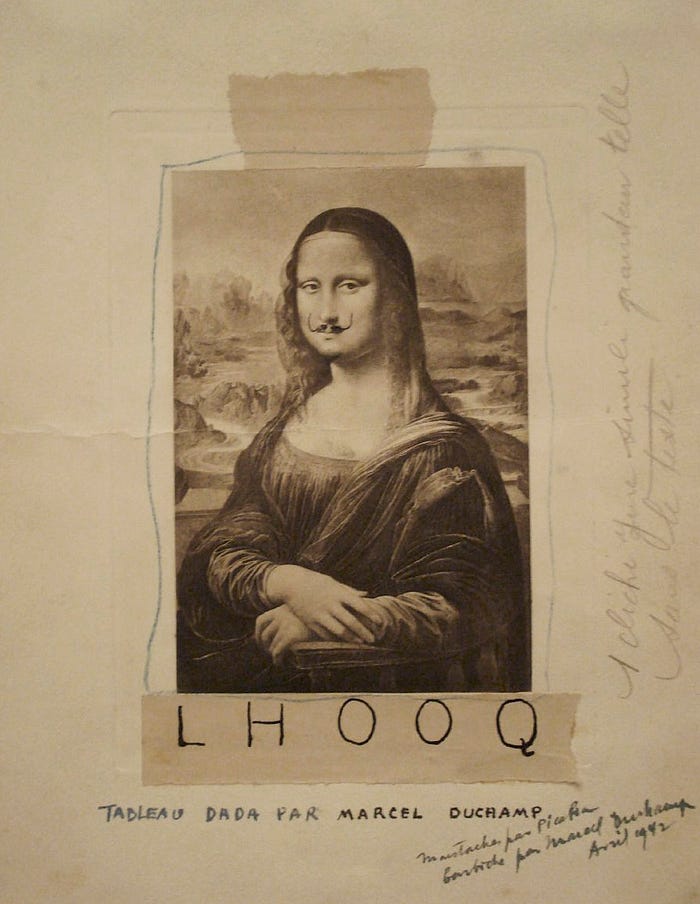Original Art Does Not Exist

In schools, we are taught to not plagiarize other people’s work. In society, we are punished for stealing other people’s intellectual property. We as a collective reward originality and penalize emulation. But by comparison, the art world is a great paradox to our common beliefs. In artmaking, imitation is a legitimate method of learning by closely “copying” the masterpieces of preceding authors. Van Gogh, the painter behind Starry Night, learned through willful imitation of Japanese art; Pablo Picasso was heavily inspired by works of artist Paul Cézanne and African sculpture art. These examples beg the question: What about art is truly original? And does originality retain its meaning in the art world?
To answer the question, we must first keep in mind the definition of what makes something “original”. As a noun, it means “something serving as a model or basis for imitations or copies.” In other words, it is something that is not a copy nor imitation, which is unique enough to inspire renditions of it. And what work of art none other than Leonardo da Vinci’s Mona Lisa has inspired more subsequent works and made millions of people flock to see it each year? The Mona Lisa is not original, in the term’s strictest interpretation. At its core, the portrait is just another commissioned job by a rich patron who, like any other rich person at the time, wanted a picture drawn of his wife. And drew Leonardo did — magnificently so. There is a reason why Mona Lisa’s smile has bewitched us for 500 years. He dissected human faces, delineating the muscles that move the lips, and combined that knowledge with the science of our visual perception. The result is Mona Lisa’s magical humanlike characteristic. If you have ever stared at an image of her, she seems to react to our gaze. What is she smirking about? Glance again. Her smile seems to flicker. We glance away, and that mysterious smile lingers in our minds, as it does in the collective mind of humanity. In no other painting are motion and emotion, the hallmarks of Leonardo’s art, so exquisitely executed.
This brings us back to the conversation of whether originality can be found in art. Although the intrinsic act of painting, which is itself 400 centuries old, is developed and matured by artists before him, Leonardo applied a scientific layer onto the method, resulting in a painting that is so accurate yet captivating that no one had ever seen before. Thus, by this line of thinking, Leonardo’s Mona Lisa is original.
Inspired works of Marcel Duchamp and Salvador Dalí by Mona Lisa further validate the portrait’s originality. In 1919, on a reproduction of a postcard, Duchamp impishly drew a goatee and a moustache on Mona’s smiling face, dubbing the work L.H.O.O.Q., which sounds a lot like French slang for “she’s got a hot ass”.

Beyond a funny attack on the mass-produced tourist icon the Mona Lisa had become, Duchamp tried to reveal a deeper interpretation of the work. The Austrian psychanalyst Sigmund Freud had previously psychoanalyzed Leonardo’s art and pointed to the artist’s inability to finish his artworks to the climax of his libido. He also argued that Leonardo was homosexual. Therefore, Duchamp’s Mona Lisa is a Freudian joke, revealing, in a simple gesture, what the painting may be concealing. And by adding a goatee and moustache on her face, Duchamp uncovers the ambiguity that Leonardo sees in the female form — that it could also be male[SY1] . While some might argue that Duchamp’s direct reuse of Leonardo’s Mona Lisa discounts its originality, I consider his synthesis of art with parody and psychology unequivocally innovative, resulting, once again, in something that is unique. And then the cycle of artmaking repeats itself again, as Salvador Dalí’s Dalí Mona Lisa was inspired by Duchamp’s L.H.O.O.Q.
Countless other artists have been inspired by and reinterpreted Leonardo’s Mona Lisa. Some of them include Andy Warhol, Ferdinand Léger, and more recently, Banksy. But ways of proving Mona Lisa’s originality can be endless. The larger deduction that we can take away from the painting’s ingenuity is that art, at its very core, is a continuum, with each artist building upon the success of the last. Ultimately, art deserves a new definition for what should be considered “original”. Building upon the hundreds of old ideas, movements, and techniques, only new techniques or ideas of expression derived from the artist’s own thinking can be counted as “original”. Mona Lisa, then, serves as the epitome of artistic expression and inspiration in the world of art.
